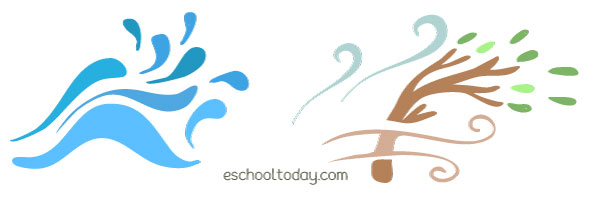- Pollination
What is a pollination vector?
Pollination vectors are simply the processes by which pollen is transferred from flower to flower. The two main vectors include abiotic vectors and biotic vectors.
Abiotic Vectors

These are the non-living processes of pollen movement. It includes the actions of wind and water. For example, wind may blow pollen from one flower to the other. Flowers that depend on abiotic vectors do not produce the attractions (bright petals, smells, and nectar) as in the case of abiotic vectors. Instead, they produce a lot more pollen. Such plants are not common in rain forests, as there is little wind action to move pollen around. In addition to this, the high density of vegetation means that it is unlikely that pollen will fall on a mature stigma.
Anemophily is the scientific term for the transportation of pollen by the wind. In anemophily, there is a lot of pollen grain waste.
Did you know:
Plants that are pollinated by wind action have some adaptations:
1. The anthers are well exposed so that the wind can blow them
2. The stigmas are larger and hairy to make them trap airborne pollen
3. They produce lighter, dry, and non-sticky pollen
4. Examples are willow trees, ragweed, and some grasses such as wheat.
Biotic Vectors

These are the living processes of the pollen movement. As we have already seen, birds, insects, and other animals can move pollen from flower to flower. Common biotic vectors include butterflies, bees, bats, and beetles. Plants that depend on biotic vectors often produce flowers with strong smells, bright colors, and nectar. Pollen grains from such plants tend to be sticky.
Humans can help plants pollinate too. Sometimes, crop researchers can collect pollen from high-yielding plants and cross-pollinate them with stigmas of other plants.
It is important to note that flowers are adapted to specific kinds of vectors. For example, birds will be attracted to flowers with strong perch and support.
